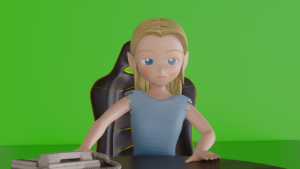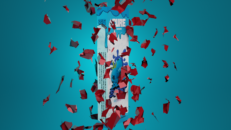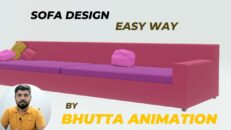In the ever-evolving realm of digital artistry, 3D modeling, rigging, and animation stand as pillars, seamlessly weaving together to bring virtual worlds to life. This trio of disciplines forms the backbone of modern visual storytelling, enabling artists to create captivating characters, immersive environments, and dynamic narratives. Let’s delve into the intricacies of 3D modeling, rigging, and animation to understand the magic behind these digital wonders.
3D Modeling: Sculpting Reality into Pixels
At the heart of any 3D project lies the art of modeling – the process of creating a digital representation of real-world objects or entirely fantastical creations. Artists use specialized software to sculpt three-dimensional meshes, defining the shape, texture, and appearance of their virtual subjects. Whether crafting lifelike characters, architectural wonders, or alien landscapes, 3D modeling provides the foundation for the entire creative process.
A key aspect of 3D modeling is understanding topology, the arrangement of vertices, edges, and faces that form the structure of a 3D model. A well-designed topology ensures smooth deformations during animation and efficient rendering. Modelers also employ techniques like sculpting, retopology, and UV mapping to refine and prepare their creations for the next stage of the pipeline.
Special Thanks to the artist Rex Mun at Blender Market
Rigging: The Digital Skeleton
Once a 3D model is born, it needs a digital skeleton to move and emote realistically. This is where rigging comes into play. Rigging involves creating a system of interconnected bones or joints within the 3D model, essentially providing the framework for animation. Riggers meticulously assign control points, known as rig controls, to different parts of the model, allowing animators to manipulate and articulate the character or object.

The quality of rigging directly influences the fluidity and believability of the animation. A well-rigged character should move seamlessly, with joints bending and muscles flexing in a way that mirrors real-world physics. Rigging artists often collaborate closely with animators to ensure that the rig meets the specific requirements of the intended movements and expressions.
Animation: Breathing Life into Pixels
With a fully rigged 3D model at their disposal, animators step into the limelight, infusing characters and scenes with movement, emotion, and narrative. Animation involves creating a sequence of frames that, when played in rapid succession, give the illusion of motion. Animators utilize keyframes, interpolation, and a deep understanding of timing and spacing to bring their creations to life.
From the subtle nuances of facial expressions to the grandiosity of epic battle sequences, animation is a powerful tool for storytelling. The success of an animated project hinges on the animator’s ability to convey emotion, personality, and narrative through the movement of characters and objects.
Conclusion:
In the multifaceted world of 3D modeling, rigging, and animation, artists collaborate to transform imagination into digital reality. From the meticulous craftsmanship of modelers to the technical prowess of riggers and the storytelling finesse of animators, each discipline plays a crucial role in the creation of awe-inspiring virtual worlds. As technology continues to advance, pushing the boundaries of what is possible, the future promises even more immersive and captivating experiences through the synergy of 3D artistry.





1 Comment